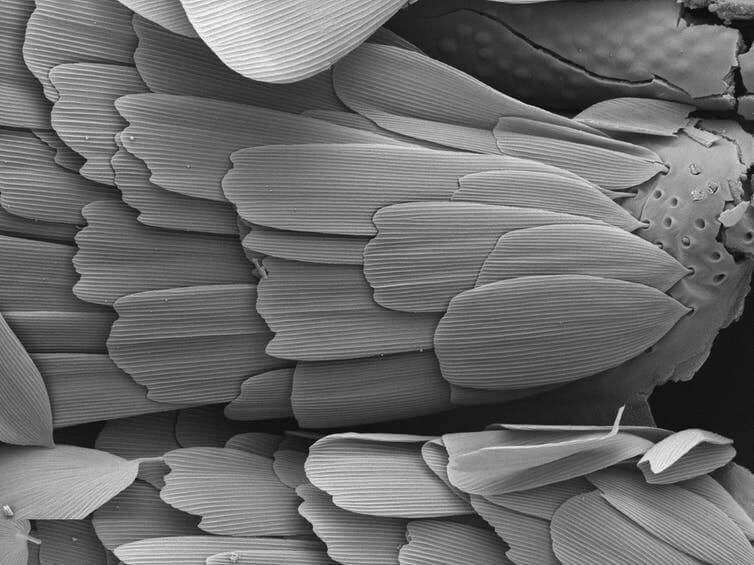- Get link
- X
- Other Apps

Butterflies and moths of Lepidoptera are among the most beautiful insects known to us in thousands of species from around the world. But their evolution was a mystery to scientists, because there are practically no petrified remains of Lepidoptera. And scientists from the Netherlands discovered fossils of lepidoptera, which are older than those found earlier, and proved that this insect died at least 200 million years ago.
The analysis of these fossils led scientists to rethink the evolution of Lepidoptera. Because it was previously believed that the long proboscis with which butterflies and moths suck out the nectar from flowers, actually appeared earlier than flowering plants, so they originally had a different purpose.
The petrified remains of the ancient Lepidoptera are a real rarity. Although butterflies seem fragile and tender creatures, their outer skeletons are made of chitin, which is quite durable. Chitin or the products of its decay are well preserved in the fossil record.
The best insects are preserved in amber. The fossilized Lepidoptera was found in several sediments. For example, butterflies from the Florissan fossils of North America, dating from the Eocene epoch, are known to be 35 million years old. Fossil caterpillars with a characteristic body structure, typical of all modern butterflies and moths, were extracted from Lebanese amber 125 million years old. But further - nothing. Until this day.
And this is strange, because Lepidoptera is closely related to another known modern group of insects, the flies of Trichoptera. The fossils of this group are well known and traceable to the Permian period of the Paleozoic era (250 million years). Since these groups have a common ancestor, the first Lepidoptera should, theoretically, also appear in the Permian period.
Lucky case
The recently discovered fossils are not that old, but fall into the Triassic period, the beginning of the era of the dinosaurs. Delicate fossils are characteristic for butterflies and moths scale. They were found absolutely by chance, when researchers tried to extract pollen grains from rock samples in a well in the north of Germany.
In the process, the rock is dissolved (usually using the most powerful hydrofluoric acid), leaving behind an organic residue rich in organic material. Although it is usually pollen material and plant debris, it can have a sclerotized (fortified) exoskeleton of insects and other invertebrates. For example, in this way you can find bits of petrified scorpion.
Few insects have scales on their wings, and scales on the wings of butterflies and moths are very different from any others. There are also characteristic contours and fields that make it possible to identify the scale of the butterfly. Undoubtedly, fossil scales found in a German well belonged to ancient butterflies and moths.

Curiously, the scale indicates a group of butterflies known as Glossata. Almost all modern butterflies belong to this group, characterized by a tubular part of the mouth, known as the "proboscis." It is used for feeding liquids, for example nectar. There are primitive moths with a "biting" mouth, and some of them were found in rocks 190 million years old. But the newest discovery is even more ancient, and it relates the origin of modern butterflies with proboscis for 70 million years ago.
Evolutionary biologists have something to think about. Until now, we thought that the modified sucking proboscis of modern butterflies appeared along with the spread of flowering plants in the early Cretaceous, about 100 million years after newly discovered fossils appeared.
Scientists who have discovered fossils suggest that Lepidoptera may have acquired a proboscis to suck in any available fluids at a time when the environment was much drier. We know that this was the case, but now it's too early to make certain conclusions.
Whatever the true reason for the appearance of the butterfly's trunk, this evolutionary innovation has led to a phenomenal variety and greatly added to the beauty of our planet.
The article is based on materials .
- Get link
- X
- Other Apps
Comments
Post a Comment